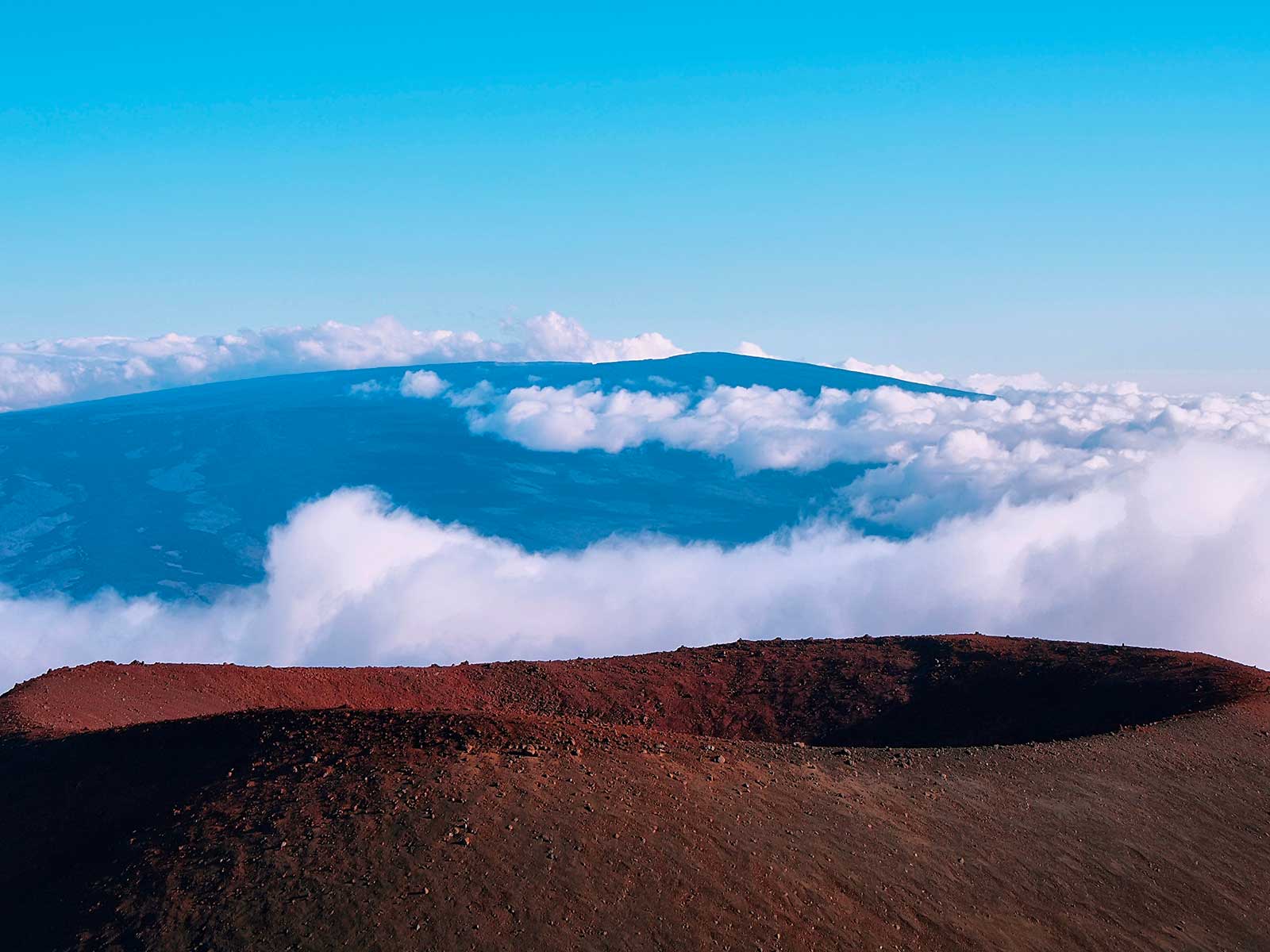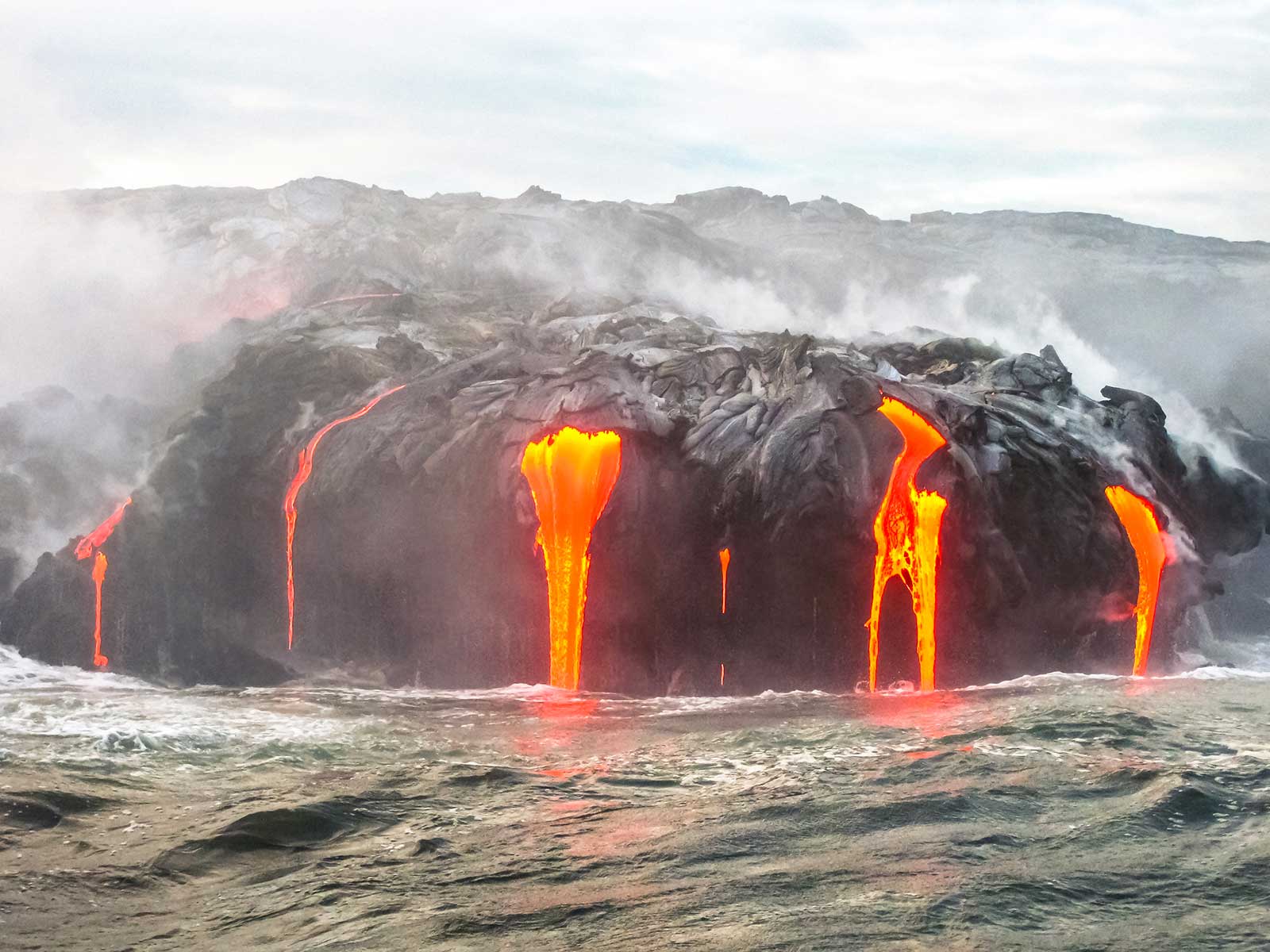Hawai’i Volcanoes National Park
The island consists in total of five separate volcanoes: the Kohala, Mauna Kea, Hualālai, Mauna Loa, and Kilauea volcano. The Hawai’i Volcanoes National Park encompasses two of these volcanoes: Mauna Loa and Kīlauea. Kīlauea is one of the world's most active volcanoes and on the other hand, Mauna Loa is the world's most massive shield volcano. The Kilauea volcano is definitely the most famous one and its lava can be seen flowing into the ocean. At night its glow is visible at the Halema’umau crater. For the purpose of seeing these natural wonders, the park provides daily updates of where the lava is flowing. The visitors are able to witness the dramatic volcanic landscapes as well as glimpses of rare flora and fauna. As a proof of its outstanding natural values, Hawaiʻi Volcanoes National Park was designated as an International Biosphere Reserve in 1980 and a World Heritage Site in 1987. The park also delivers scientistic insight into the birth of the Hawaiian Islands.
More pictures of Hawai’i Volcanoes National Park


